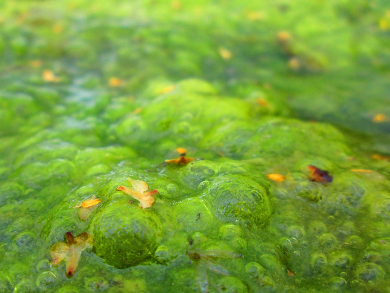Municipal wastewater, i.e., sewage, contains contaminants that need to be removed during wastewater treatment. Some of these contaminants, however, can also act as nutrients for plants and algae. This can be exploited for water treatment: Microalgae, for example, have been used to lower nitrogen concentrations in water. However, their small size makes them difficult to remove and harvest.
Shijian Ge and Pascale Champagne, Queen’s University, Kingston, Ontario, Canada, have used the macroalgae Chaetomorpha linum to recover nutrients from wastewater and convert them to useful biomass. The team used differently concentrated types of wastewater from a wastewater treatment plant to cultivate the macroalgae. The algae were grown in wastewater aerated by aquarium pumps and illuminated by commercially available aquarium LED lights. The algae were able to remove nitrogen and phosphorus from all types of wastewater with high efficiency. The larger size of the algae makes them significantly easier to harvest than microalgae.
According to the researchers, the process not only provides efficient wastewater treatment, but the algae biomass grown during this water treatment process could be used as a source of protein, carbohydrates, or for biofuel production. The team points out that further studies on optimized process conditions are needed to judge the approach’s economic feasibility.
- Cultivation of the Marine Macroalgae Chaetomorpha linum in Municipal Wastewater for Nutrient Recovery and Biomass Production,
Shijian Ge, Pascale Champagne,
Environ. Sci. Technol. 2017.
DOI: 10.1021/acs.est.6b06039




